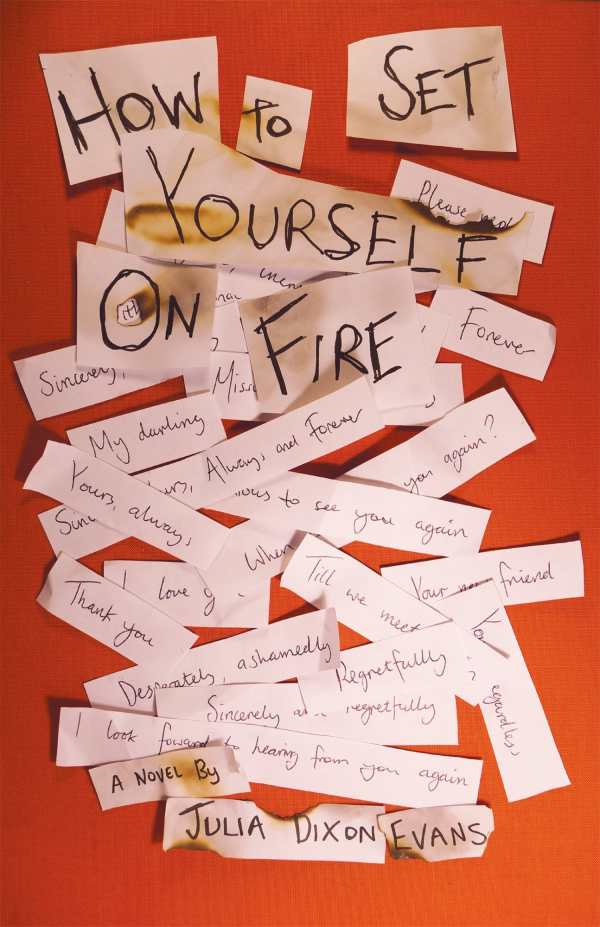It looks like you've stumbled upon a page meant to be read by our code instead of viewed directly. You're probably looking for this page.
How to Set Yourself on Fire
How to Set Yourself on Fire is a brooding tale of memory, emotional malaise, grief, and voyeurism. Languorous, thirty-five-year old Sheila steals her dead grandmother’s shoe box, filled with 382 letters, and discovers a secret past. The cost is her own disenchantment. This candid portrait of depression examines an “ancestry of pain and blame” with blistering effects.
At the start of the novel, Sheila is adrift in a California rental. Haunted by her parents’ long-ago separation, she is jobless and holding fast to a few remnants that remind her of human contact. These include a fleeting exchange with a UPS driver that blooms into one-sided obsession, and overheard conversations between her neighbor, Vinnie, and his daughter, Torrey. Biting, focused scenes reveal how minutia defines Sheila’s days.
Chapters alternate between the quixotic letters her grandmother received from a neighbor, strained conversations between Sheila and her mother, and Sheila’s newfound friendship with the preteen Torrey and her father. These disparate threads converge around the lies and insensitivities that separate people, and the mutual need that draws them back together.
The plot wisely avoids drawing a straight line from past trauma to her present-day troubles; much is left unsaid about the intervening years that left Sheila so numbed.
Amid dark themes of failure, Torrey stands out as an anchoring presence. Her friendship, which remains free of judgment, allows Sheila to begin finding a way back from her self-sabotaging habits.
This unsettling exploration of a troubled mind braids passion with stagnation, and the power of family ties with the need to evade them. Sheila’s struggle to break away from her own hurt doesn’t end with the book, which offers a thoughtful portrayal of the slow path home. Here, even the most isolated individuals find meaningful connections. In a beautiful turn of events, the hope that Sheila had longed for was always near.
Reviewed by
Karen Rigby
Disclosure: This article is not an endorsement, but a review. The publisher of this book provided free copies of the book to have their book reviewed by a professional reviewer. No fee was paid by the publisher for this review. Foreword Reviews only recommends books that we love. Foreword Magazine, Inc. is disclosing this in accordance with the Federal Trade Commission’s 16 CFR, Part 255.
